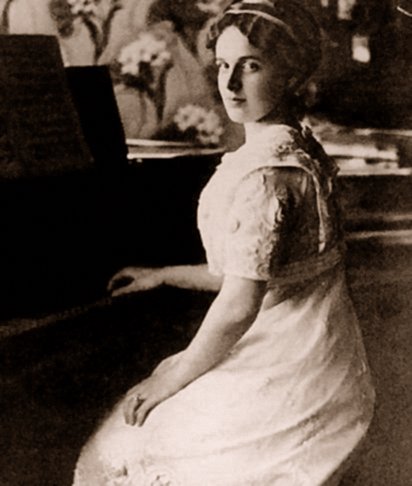1912 to 1920
1912
The concept and name of the Sociedade de Cultura Artística – a hub for fostering appreciation for art and the circulation of ideas – are defined in the house of lawyer Vicente de Carvalho. From that moment onward, the meetings become official and take the form of literary-musical soirées. The first is held in the Salão Steinway, the auditorium of the Conservatório Dramático e Musical de São Paulo.
1915-16
Afonso Arinos de Melo Franco (1868–1916) is a lecturer at five events concerning Brazilian culture. The first of them takes place in the middle of World War I, in the auditorium of the Clube Germânia. The musical part of the third conference enjoys the presence of Catulo da Paixão Cearense (1863–1946), a poet, musician and composer widely recognized thanks to adaptations of his poetry by composers such as Chiquinha Gonzaga, Anacleto de Medeiros, Vicente Celestino and Olga Praguer Coelho. His masterpieces include “Luar do sertão” (1914) and “Caboca di Caxanga” (1912). The number of members of Cultura Artística grows to more than 300.
1916
In this year, Cultura continues to grow in size and importance, increasing its maximum number of members to 650 and furthering its programming with intellectuals and artists on the international level. Pianist Antonieta Rudge performs alongside Ukrainian violinist Mischa Elman (1899–1984).

1917
lfredo Pujol holds seven conferences about Machado de Assis. Published some years later and currently republished by Imprensa Oficial, they are a key reference for the study of Machado’s life and work. Data about the work can be consulted here.
The first-secretary of the society, Nestor Pestana, begins the negotiation for an exclusive soirée with Serguei Diaghilev’s ballet company, the Ballets Russes. This event is held on September 3 and enjoys the participation of conductor Ernest Ansermet, the company’s conductor for around eight years, and musical director of the Geneva Symphony Orchestra.
“This really was a complete triumph. Because managing in a quiet capital like ours to completely fill a three-thousand-seat theater to the point where the directorship needed to sit in the galleries; and to present a select program, featuring a large troop of Russian ballet dancers, which was celebrated in all their performances in Europe and for this very reason charges expensive fees; to manage all of this in São Paulo is a true tour de force, evincing the enormous and unflagging efforts of the directors of that meritorious society.”
Estadinho, the evening edition on September 4 of the newspaper O Estado de S. Paulo
1918
On October 13, the orchestra conducted by Gino Marinuzzi performs Symphony in D minor, op. 125, by Ludwig van Beethoven, for the first time in São Paulo.
“The Beethoven symphony was masterfully interpreted by Marinuzzi, in perfect keeping with his reputation. Carrying off the execution of this gigantic work with an orchestra extremely exhausted after many months of an arduous stint of rehearsals and shows represents a victory for anyone seeking yet another reason to praise him. Marinuzzi gave the first tempo, the allegro, a rhythm and authority of great style, and in the admirably conceived scherzo the spectator felt that he dominated his orchestra, which was impelled by the irresistible urge to quicken the pace, but yet submitting to the rhythm of its excellent conductor.”
O Estado de S. Paulo, October 15
1919
The directorship decides that it is time to begin to look for a place for its own auditorium and headquarters, and on the suggestion of architect and member Ricardo Severo, they find an area in the region of Rua Florisbela. On November 7, they close the deal on the property.